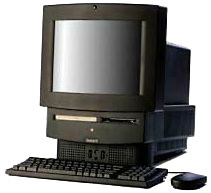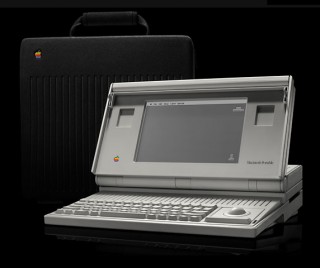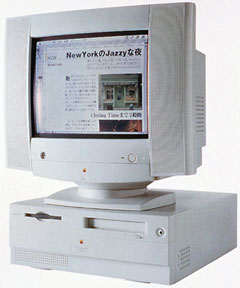Second Class Macs are Macs you should buy with your eyes wide open – if you buy them at all. The only ones I would put on the “avoid at all costs” list are those with three or four apples. The Macs with only one or two apples can be very nice computers as long as you are aware of their limitations.
Apple has produced a few computers that could have provided more performance – and should have, based on the CPU they used. However, they were hobbled by other design considerations, usually keeping costs down.
The 10 Worst Macs – 1984 through 2006
 5200-53xx, 6200-6320
5200-53xx, 6200-6320 
- Performa 600

- Macintosh TV

- PowerBook G3/233, no cache

- Mac LC

- Classic II

- Mac LC II

- Color Classic

- PowerBook 5300

- Core Solo Mac mini

These are Apple’s more compromised hardware designs. For the most part, they’re not really bad – simply designs unable to work as well as they should have. We divide these models into three categories:
- Limited Macs. These are generally the best of the Second Class Macs and usually have only one or two areas that limit their potential. They usually rate one apple.
- Compromised Macs. These are usually descent Macs where performance has been compromised to keep costs down, prevent competition with a more expensive model, or to meet other design goals. 1-2 apples.
- Road Apples. These are the worst, rating 3 and 4 apples.
The Full List
The number of apples ranks Second Class Macs from somewhat limited (![]() ) to those you should avoid at all costs (
) to those you should avoid at all costs (![]() ).
).
For the best in used Macs, visit our Best Buys page. Models are listed in the order of their introduction.
 Mac Portable
Mac Portable  September 1989
September 1989- Mac IIfx
 March 1990
March 1990 - Classic
 October 1990
October 1990 - Mac IIsi
 October 1990
October 1990 - Mac LC
 October 1990
October 1990 - Classic II
 October 1991
October 1991 - Mac LC II
 rMarch 1992
rMarch 1992 - Color Classic
 February 1993
February 1993 - Performa 600 and Mac IIvx
 September 1992
September 1992 - Macintosh TV
 October 1993
October 1993 - Quadra 800/840av/Power Mac 8100 case
 February 1993
February 1993 - Centris (the name)
 February 1993
February 1993 - PowerBook 150
 July 1994
July 1994 - PowerBook 5300
 1995
1995 - 5200-53xx and 6200-6320
 several different models sharing the same flawed design, introduced April 1995 and later
several different models sharing the same flawed design, introduced April 1995 and later - Power Mac 7200, 8200
 March 1996
March 1996 - PowerBook 1400/117
 October 1996
October 1996  Power Mac 4400
Power Mac 4400  February 1997
February 1997- MainStreet PowerBook G3/233, no cache
 May 1998
May 1998 - Beige Power Mac G3 (Rev. A)
 November 1997
November 1997 - Power Macintosh G4 (Yikes!)
 August 1999
August 1999 - 350 MHz G3 iMacs
 Oct. 1999, July 2000
Oct. 1999, July 2000 - Power Mac G4 Cube
 July 2000
July 2000 - G4 Mac mini
 January 200
January 200 - Core Duo Mac mini
 February 2006
February 2006 - Core Solo Mac mini
 February 2006
February 2006 - Early 2008 MacBook Air
 January 2008
January 2008 - Late 2008 MacBook Air
 October 2008
October 2008 - Mid 2009 MacBook Air
 June 2009
June 2009 - 2 GB Late 2010 MacBook Air
 October 2010
October 2010 - 2 GB Mid 2011 MacBook Air
 July 2011
July 2011
Other Mac Hardware
- AppleVision 1710 Monitor

- PowerBook Express Modem

- GeoPort Modem

- Apple Adjustable Keyboard

- Apple USB keyboard
 August 1998 with original iMac
August 1998 with original iMac - The Round iMac/G3 Mouse
 August 1998 with original iMac
August 1998 with original iMac
If you would like to nominate another model as a Second Class Mac, please post in the comments and explaining why. Thanks!
For another perspective, see The 10 Worst Macs Ever Built written by Remy Davison on Insanely Great Mac in 2001 – and What Were the 10 Worst Macs of All Time?, a response by Charles W. Moore on Applelinks. For more recent perspectives, see The 10 Worst Macs Ever, published on Low End Mac in 2007, and Apple’s 10 Worst Products, published in 2010.
Second Class Macs is intended as a good natured look at Macintosh bloopers, not as an indictment of Apple, Inc. I’d rather have the worst of these than a Windows machines.
Keywords: #roadapples #secondclassmacs
Short link: http://goo.gl/4F6Vpy
searchword: roadappleindex


I think the entire series of Macbook and Mac Minis from 2006 – 2008, should be road apples, or at least “buy with your eyes wide open” Macs. Why is that?
1. Slow running Intel programs. These machines have integrated graphics, as well as slow processors, resulting in slow performance.
2. Slow running Power PC programs. It appears Rosetta uses the graphics card to speed up the running of Power PC programs. Without a graphics card, these machines lag when using Rosetta, especially under Snow Leopard.
I know this is an anecdotal story, but I have a 2008 Macbook 2.16. This machine lags running Word 2004 to the point where I type faster then it displays. Same for Dreamweaver CS2, and Photoshop, and Acrobat – all the programs I use on a regular basis.
I recently purchased a used Powerbook G4 12″ 1.5 for $80. That machine flys. Word, Photoshop, Excel, and everything else opens quickly, there’s no lag, and I can throw whatever I want on it, and opens without lag.
Be careful buying those machines. As of right now, a Powerbook is far cheaper then a Macbook, and is far faster.
I am writing this on a 2007 Mac mini with GMA 950 graphics using OS X 10.6 Snow Leopard on a 1600 x 1200 pixel display, and I have no complaints. AppleWorks runs beautifully with Rosetta; Word and Excel have always been dogs in my opinion. Most of my software is Intel, and these machines handle native software very handily – assuming enough system memory. Now if you want to run PowerPC applications, a PowerPC Mac may well be your best bet. For basic tasks like writing and email, you really can’t beat the economy of PPC hardware with OS X 10.4 Tiger or 10.5 Leopard.